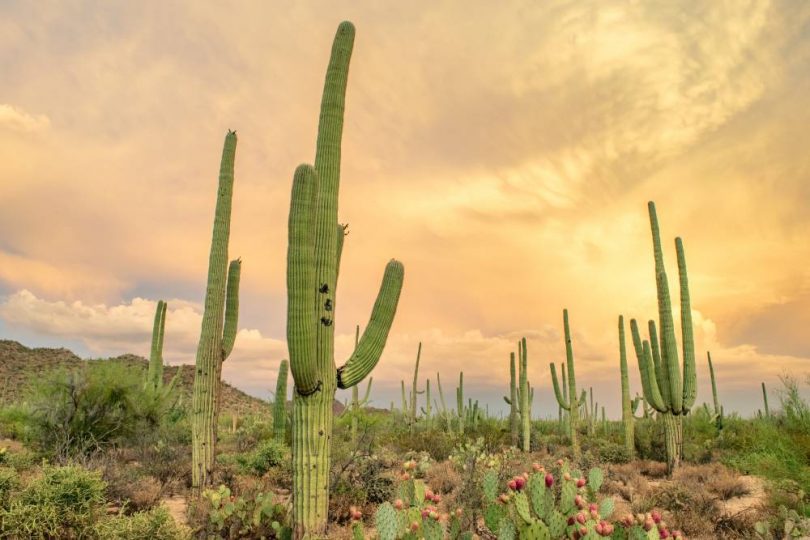There exists many psychoactive compounds where minimal scientific research is available concerning their effects on the human body, mind, and spirit – all but leaving it to users of these substances to determine those criteria for themselves. One such compound is 5-methoxydimethyltryptamine, or 5-MeO-DMT, which exists naturally within several botanical sources and even one animal.
What is 5-MeO-DMT and where does it come from?
Historically the stuff of indigenous Mexican and South American tribes and shamans, 5-MeO-DMT is a powerful psychedelic alkaloid. Many non-indigenous people now have limited access to 5-MeO-DMT and they utilize it for their own spiritual or mental improvement despite a Schedule I classification in the United States since 2011.
But where is 5-MeO-DMT typically derived from and how is it ingested? For better or worse the Colorado River toad – also known as the Sonoran Desert toad, Bufo alvarius, and Incilius alvarius – and its glandular venom secretions are the primary source of 5-MeO-DMT to people in the “civilized” world. The toad’s venom has gone from a rarely known, somewhat inaccessible desert novelty to a trendy psychedelic phenomenon, with former boxing champs and politician’s sons proselytizing the psychoactive healing powers the compound and experience can deliver.
Human impact on toads
Existing in a small tract of land in the Sonoran Desert regions of Mexico and the United States, Colorado river toads could be an endangered species due to poaching for their special venom.
Synthetic 5-MeO-DMT has been manufactured and constitutes a large part of how non-indigenous people access and consume 5-MeO-DMT, however extracting, concentrating, and smoking the venom derived from the toads themselves has been the most-effective and potent method of ingestion. This fact alone, makes Colorado River toads vulnerable to under-population and abuse due to the often violent and stressful ways they are captured and contained by humans. That said, 5-MeO-DMT synthetics are still psychedelically-capable, lending some hope to the toads.
Botanical sources of 5-MeO-DMT
Many plant species containing 5-MeO-DMT are from the Amazon River deltas and jungles of certain South American regions and have been integral to the native people of these areas for thousands of years.
Found primarily in the western Amazon River regions of Brazil and Colombia, the Virola species of tree and its soft, 5-MeO-DMT-rich, inner bark is used by natives to produce a hallucinogenic snuff that is forever tied to their religious ceremonies. The resin that forms the basis of the snuff is created by drying, reducing, extracting, and grinding strips of the slender Virola tree bark. [1]
Yopo, another hallucinogenic snuff rich in 5-MeO-DMT is native to Colombia and Venezuela, as well as the Caribbean, and is derived from the bark, seeds, and beans of the Anadenanthera peregrina tree. Radiocarbon data of snuff tubes found by archaeologists has revealed that that yopo’s hallucinogenic usage dates back as far as 2130 BC. [2]
A member of the Rutaceae plant family that is also found in Brazil, the bark of Dictyoloma incanescens can be reduced and concentrated to form a psychoactive snuff that indigenous people have consumed for thousands of years. [3]
Outside of South America or the southern portion of North America is Delosperma cooperi also known as “hardy iceplant.” This perennial flowering plant originally native to South Africa grows in Mediterranean climates and warmer winter climates – making it accessible and sustainable for people around the world. Hardy iceplant leaves contain 5-MeO-DMT, with its potency and concentration peaking during the summer season. [4]
The research on hardy iceplant is certainly important because it’s not linked to indigenous cultures or ceremonies that could be endangered by depletion and it can be grown in numerous regions of the world. If you listen carefully enough, you can probably hear the toads breathe tiny sighs of relief.
Sustainability of 5-MeO-DMT
There are dozens of plants that contain 5-MeO-DMT with many species likely still to be discovered. By continuing to research and document such plants, we’ll learn about sustainable and ecologically-sound 5-MeO-DMT sources while moving away from harmful practices like poaching Colorado River toads, depleting their populations and habitats.
With 5-MeO-DMT plant sources found globally including Europe and Asia, there exists an opportunity to spiritually connect and awaken many people while also being more benevolent to nature’s sentient creatures.
References
[1] Schultes, Richard Evans, and Bo Holmstedt. De plantis toxicariis e mundo novo tropicale commentationes II: The vegetal ingredients of the myristicaceous snuffs of the northwest Amazon. Rhodora. 1968;70(781):113-160. [journal impact factor = 0.28; times cited 73][2] Pochettino ML, Cortella AR, Ruiz M. Hallucinogenic snuff from Northwestern Argentina: Microscopical identification of Anadenanthera colubrina var. cebil (Fabaceae) in powdered archaeological material. Economic Botany. 1999;53(2):127–132. doi:10.1007/bf02866491. [journal impact factor = 1.731; times cited 47]
[3] Pachter IJ, Zacharias DE, Ribeiro O. Indole alkaloids of Acer saccharinum (the Silver Maple), Dictyoloma incanescens, Piptadenia colubrina, and Mimosa hostilis. The Journal of Organic Chemistry. 1959;24(9):1285-1287. [journal impact factor = 4.354; times cited 132]
[4] Leistner, Otto Albrecht. Seed plants of southern Africa: families and genera. National Botanical Institute, 2000. [times cited 276]








